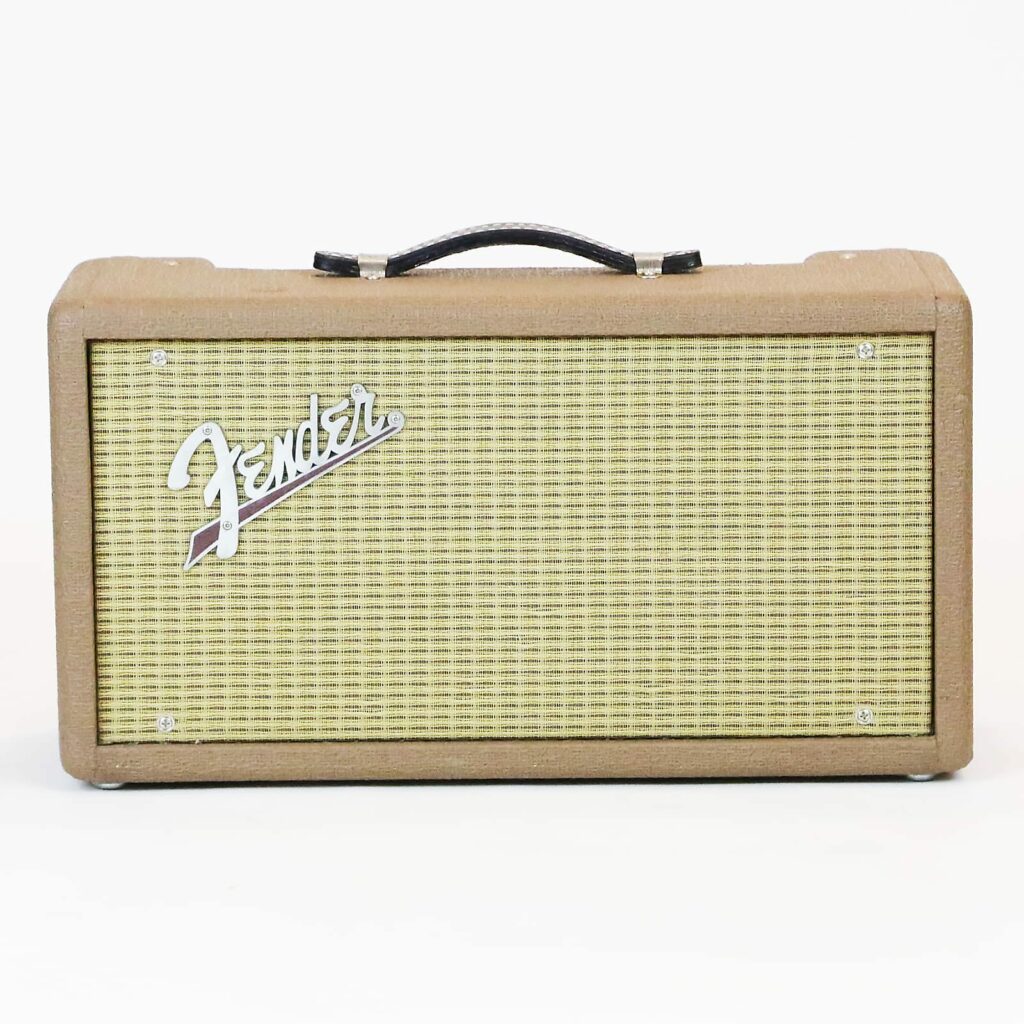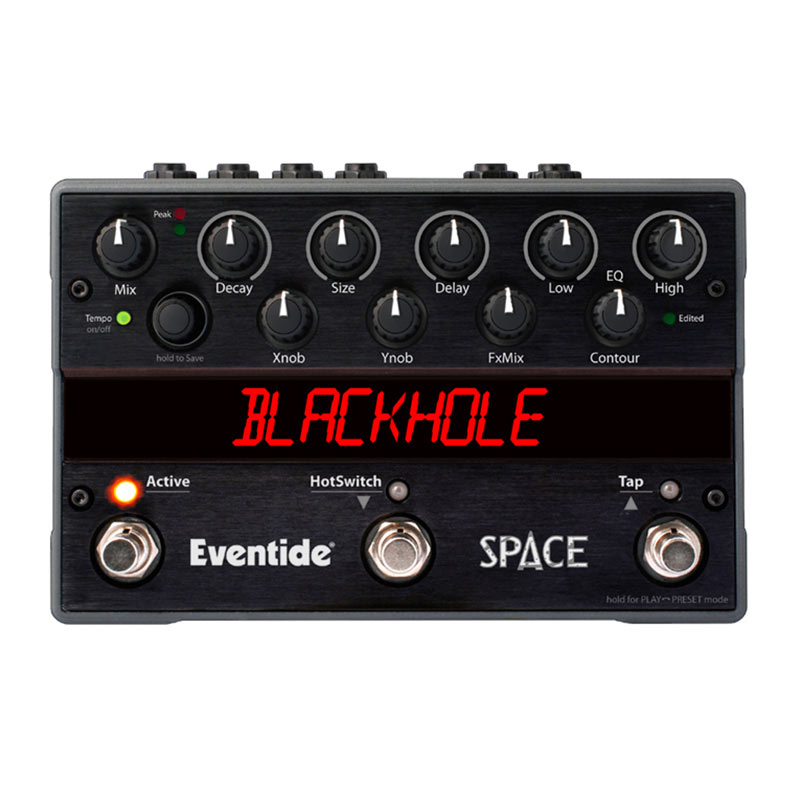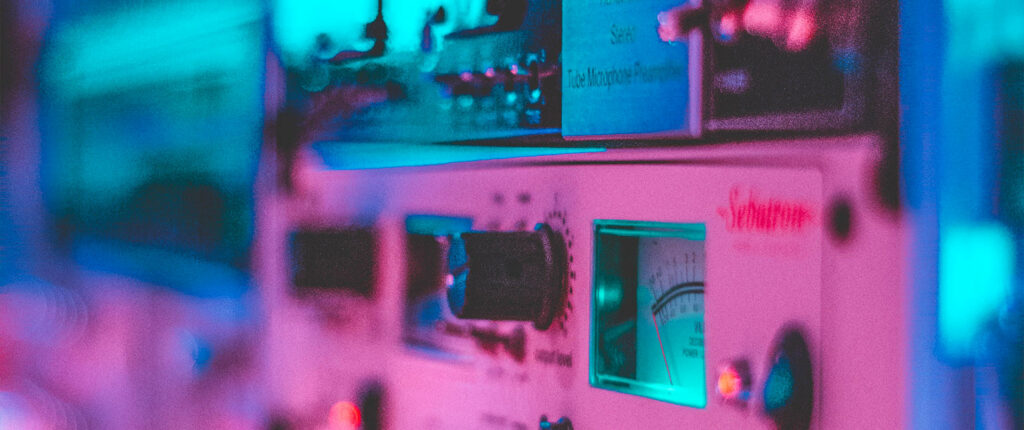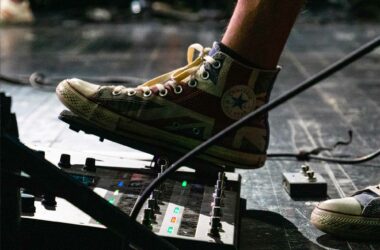Many guitarists know reverb as an amp preset, but in pedal format, reverb is a must-have effect that can offer you an infinite palette of sound! From the gentle ambience of a concert hall to the vast reverberations of a cathedral, the reverb effect offers an infinite palette of sonic possibilities. In this article, we delve into the mysterious and captivating world of guitar reverbs.
What’s a reverb pedal?

What is reverb?
Reverb is the reflected echo of sound from surrounding surfaces. This effect spatializes your sound, giving the illusion of space. It recreates the natural ambience of a space, adding depth and dimension to your guitar playing.
Reverb history
In the 1920s, early experiments with classical music orchestras led to the use of echo chambers to reproduce natural reverberation. The BBC was a pioneer, building the first echo chamber in 1926. However, these early methods lacked control over the sound. Later, in the 1940s, spring and plate systems emerged, offering mechanical alternatives for creating artificial reverberation.
The 1950s saw the advent of plate reverberation, closely followed by delay line reverberation (for the notion of distance), introducing more sophisticated techniques. With the evolution of electronics, digital reverberation took over in the 1980s, offering even greater flexibility. More recently, convolution reverberation has enabled precise simulation of sound space.
Reverb pedal operation
Reverb pedals work by simulating these sonic reflections.
An analog reverb pedal uses physical electronic components, such as springs or delay circuits, to recreate the reverb effect. The audio signal is sent through these components, which add delay and mix the reverberated signal with the original, creating a spacious ambience. The pedal controls the level, duration and sometimes the type of reverb.
Digital reverb pedals, on the other hand, use digital processors to reproduce the reverb effect. The audio signal is converted to digital data, processed to simulate different acoustic environments, and then converted back to analog audio.
Analog VS digital
Analog reverbs often have a warmer, more organic tone, with a coloration of sound that can be appreciated for its vintage character. On the other hand, they offer less precise control over parameters than digital reverbs.
Digital reverbs can thus be used to generate a multitude of different types of space, from halls to cathedrals to more experimental environments. They also allow much more precise control over parameters such as reverb time, reflection level, tonal color, etc.
Digital reverbs are often perceived as cleaner and more transparent, offering precise reproduction of the desired acoustic characteristics. One big advantage is that they can also store presets, making it easy to recall previous configurations.
The different types of reverb

Spring Reverb:
- Based on the use of metal springs to create sound reflections.
- It is often associated with vintage sounds, used in 1960s surf and rock guitar amps.
Plate Reverb:
- Uses a metal plate to create sound reflections.
- A warm, dense sound, often used in classic recording studios.
Room Reverb:
- Simulates the acoustics of a room or auditorium of variable size.
- Ideal for creating a realistic, natural ambience, often used in live recordings.
Convolution reverb :
- Digitally reproduces the actual acoustic characteristics of a space.
- Can simulate specific environments, such as renowned concert halls.
Modulation reverb :
- Adds modulation effects such as chorus or tremolo to the reverb.
- Offers more complex and experimental sound textures.
Granular Reverb :
- Divides the signal into small fragments (grains) to create a textured reverberation.
- Produces unique, futuristic atmospheric effects.
Reverb Tape Delay :
- Reproduces the sound of tape reverb.
- Gives a warm, vintage sound, often associated with recordings from the 1950s-1960s.
Reverb Inverse :
- Reverses the reverb attack, creating an effect where the reverb precedes the direct sound.
- Produces experimental and surprising sound effects.
Some artists and anecdotes about reverb
Phil Spector and the “Wall of Sound” : Music producer Phil Spector was famous for his recording technique known as the “Wall of Sound”. He used reverb extensively to create an immersive atmosphere in his musical productions of the 1960s. Reverb was one of the key elements of his distinctive production approach.
The Beatles and reverb: The Beatles experimented with reverb in many different ways throughout their career. In early recordings, they often used natural studio reverb, but as time went on, they began to use artificial reverb effects in creative ways. In the song “Tomorrow Never Knows” from the album “Revolver”, for example, reverb is used in a very experimental way.
Brian Eno and ambience: Brian Eno, the renowned musician and producer, is known for his interest in ambience and the creative use of reverb. He has often described reverberation as a means of creating a “soundscape” and adding a spatial dimension to music.
Daniel Lanois and U2: Producer Daniel Lanois, who has worked with the band U2, is renowned for his innovative use of reverb. In the famous album “The Joshua Tree”, reverb helps create a desert atmosphere that matches the album’s theme.
Jimmy Page and Headley Grange Studios: During the recording of the “Led Zeppelin IV” album, guitarist Jimmy Page used the natural reverberation of the great hall at Headley Grange Manor to record John Bonham’s famous drum track on “When the Levee Breaks”. This gave the drums a massive, powerful sound.
“Gated Reverb” in the 1980s: In the 1980s, recording engineer Hugh Padgham popularized the “gated reverb” technique in drum recordings, notably on Phil Collins albums such as “In the Air Tonight”. The reverb was cut off abruptly with a noise gate, creating a distinctive sound effect.
Abbey Road Studios: London’s Abbey Road Studios are famous for their expert use of reverb. Abbey Road’s sound engineers developed innovative techniques to capture iconic sounds, such as the reverberation of the Beatles’ drums.
Some reference reverb pedals
A number of reverb pedals have become iconic and left their mark on music history because of their unique sound and influence on artists. Here’s a selection of the most iconic and mythical reverb pedals:

Spring Reverb (Fender Reverb Unit): Fender’s spring reverb, built into their amplifiers, defined the surf guitar sound of the 1960s. The Fender Reverb Unit is also a legendary external unit.
Electro-Harmonix Holy Grail: This pedal offers a variety of reverbs and is a timeless classic. It’s appreciated for its ease of use and warm sound.


Strymon BigSky: The BigSky is a high-end digital reverb pedal offering a wide variety of reverb algorithms. It’s renowned for its exceptional sound quality, and is best suited to discerning guitarists.
Boss RV-6: Boss’s influential reverb pedal series. The RV-6 model offers a variety of reverb options, from spring to modulated reverb, in a compact format.


Eventide Space: Renowned for its studio-quality effects, Eventide Space offers a wide range of reverbs, including unique options such as Blackhole Reverb.
TC Electronic Hall of Fame: This reverb pedal offers great versatility, with the ability to load custom presets via software. It offers a wide range of reverbs.

And the list could go on ;).
Conclusion: dive into the ocean of reverb

Whether you’re looking to recreate the atmosphere of a live concert or explore uncharted sonic dimensions, a guitar reverb pedal is an essential tool for any guitarist . From rudimentary echo chambers to sophisticated reverb processors, from classic pedals to iconic artists, the world of reverb is vast and captivating.
Don’t hesitate to mention your favorite reverbs in the comments!










